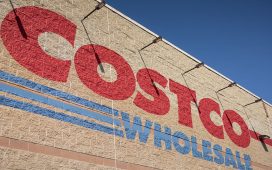Sixteen years ago, the Rudd government ordered an inquiry into the supermarket sector amid rising public discontent about grocery prices.
The sector was already highly concentrated with Coles and Woolworths enjoying a collective 65% share of the market, as the Franklins business withered and upstart Aldi was still in its early stage of expansion in Australia.
In 2008, the competition regulator found that profit margins at Coles and Woolworths were in line with major overseas supermarkets.
Margins were generally above UK’s Sainsbury’s, but well below Tesco and the US’s Walmart. They were roughly in line with France’s Carrefour and a host of other peers such as American chain Safeway.
Fast forward to 2024, and the results out of Australia are not good for shoppers, with the big supermarkets now enjoying an even tighter hold on the sector, at 67%. The profit margins of Australia’s grocery duopoly are among the highest in the world.
The Australian Competition and Consumer Commission (ACCC) ran the international comparison again as part of its new Albanese government-ordered supermarket inquiry, which found in an interim report that mirror-like offerings and prices charged by Coles and Woolworths may be stifling vigorous competition.
Profit margins at Coles and Woolworths are now well above almost all of their international peers, including Tesco, Carrefour, Sainsbury’s, Albertsons, Kroger Co and Ahold Delhaize, according to the ACCC analysis.
Two chains – Walmart and Canada’s dominant supermarket retailer, Loblaw – have similar margins to Coles and Woolworths.
No international peers have reported consistently higher levels of profitability than Australia’s big two throughout the pandemic and inflationary period.
The ACCC hasn’t drawn a conclusion on what the international comparison means for shoppers, as it will consider profit margins further ahead of its final report, due in February.
Coles and Woolworths told the regulator their profits were “not unreasonably high” and said grocery retailing was a high-turnover, low-margin business.
They have defended their retail price increases of recent years, arguing they are justified in responding to the increases in underlying inflationary costs.
The supermarkets also prefer to cite different profit metrics, an issue that played out in a fiery manner during the recent parliamentary inquiry.
The e61 Institute, an economic research centre, said in a note on Monday that Australia’s supermarket sector is “more concentrated than in other high-income economies”.
It suggests one policy option could be to provide consumers with transparent grocery price information, which could enable platforms to conduct user-friendly price comparisons of baskets of groceries or stores in a consumer’s local area.
While e61 does not reach a definitive conclusion about the supermarket sector, it does refer to the risks associated with a lack of competition in major Australian industries.
“Competition is a force for good. It spurs innovation amongst firms and leads to higher quality goods and services and lower prices for consumers,” it said.
“But there is evidence of declining market dynamism in Australia, with rising markups and the top firms remaining at the top for longer.”






